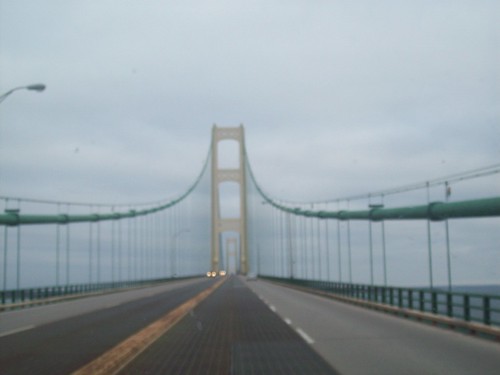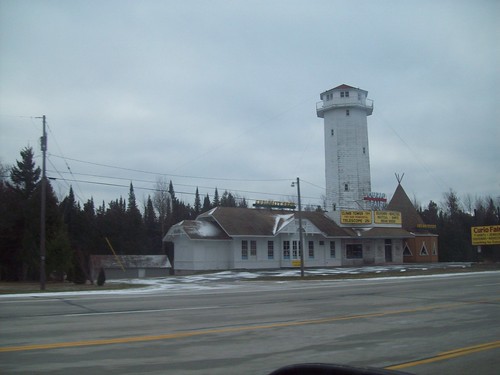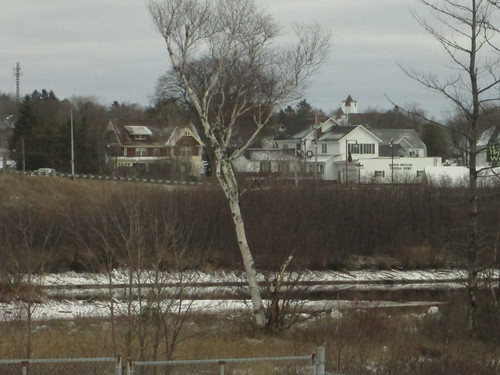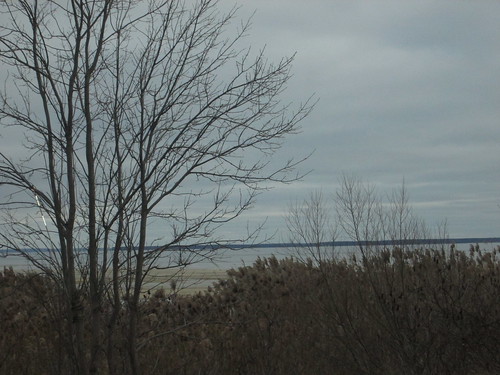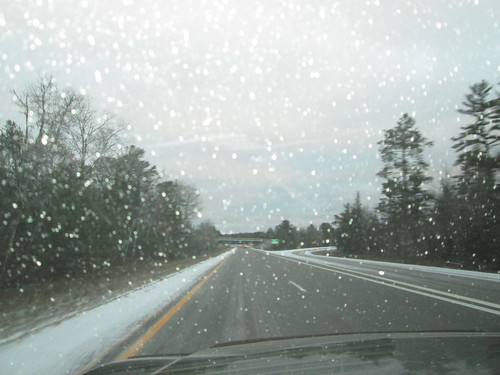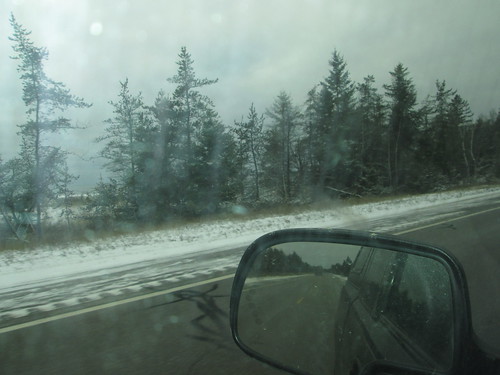The shearing class was amazing! The first day we learned how to grind, set, and sharpen the blades as well as put the stopper, thumb rest, a driver (The green strap) and a cock spur on.
The cock spur is at the end of the top blade and is a safety device to keep the blades from over lapping on ones fingers. (The bottom pair is an old pair.)
This is to show how much more wool one can get with the bigger blades than with the small ones. (The top pair is a pair of old blades of mine.) We get the blades really sharp. They have a double hollow grind, a hollow grind is the sharpest kind. The blades get sharper and sharper as they get older instead of duller, due to the thin metal. Oh, just a note, razor sharp blades are actually less likely to cut the sheep than dull blades. Dull blades can drag the skin up with the wool and cut them.
After introducing everyone I will talk about the other 3 days.
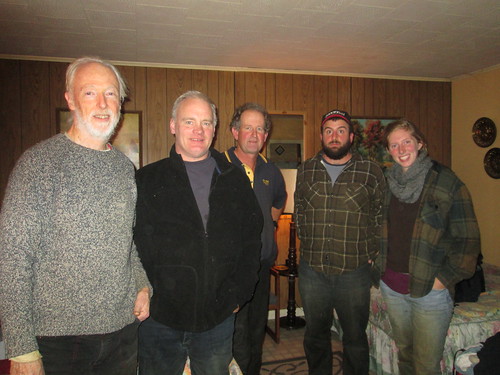
Kevin Ford from MA, a professional blade shearer of 30 years, was taking the class as a refresher to enter in competitions and improve; Doug Rathke from MN, also a professional machine shearer, does mostly machine shearing and wanted to improve his blade shearing skills to enter competitions, Doug also raises 300 Dorset ewes on pasture; Tony Dobbs is our world champion instructor from down under (New Zealand) who also raises 2000 Romney ewes and some beef; Ryan Lorrie from NY a blade shearer of 2 years was taking the class to improve and to learn how to sharpen blades, Ryan also has a flock of 30-35 colored Corriedales and is a handspinner; Kristen Rosser from PA a new blade shearer learned how to machine shear in Sep (I think) and loved it so much she wanted to learn blade shearing, Kristen is also a handspinner and artist. Sy Caryl from MI (not pictured) is a professional machine shearer who does some blade shearing on the side, and was taking the class to improve on his blade shearing skills. Sy also raises a flock of Rambouillet ewes. I was taking the class to learn the blade shearing pattern and to learn how to sharpen blades.
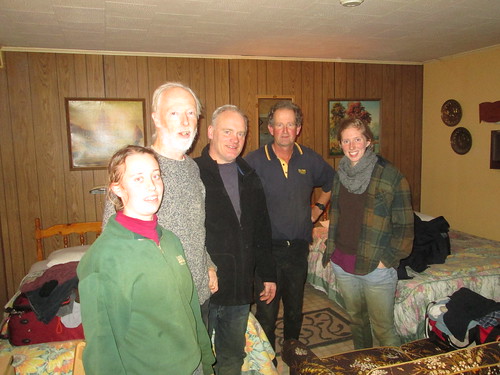
Myself, Kevin, Doug, Tony and Kristen.

Our wool handler (I can't remember his name), Tony, Sy and Ryan.
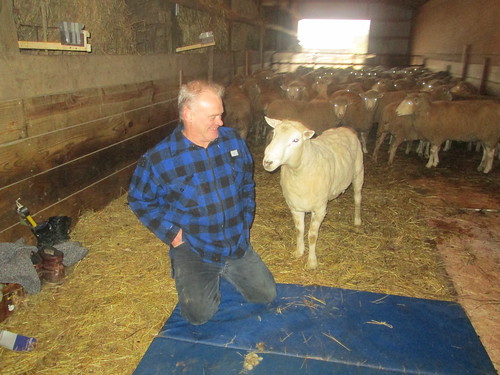
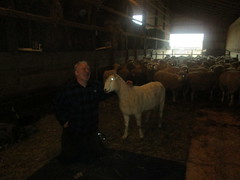
Doug's new friend. (The pegs on the wall above Doug's head are for sharpening the blades with.)

Sy, Ryan and Tony
Tony our instructor from Tectra is here in the US with his family on holiday (vacation) and generously donated time out of his holiday to teach us the art of blade shearing.
Tony also set the world record in the Guinness book Of World Records, blade shearing a sheep in 63 seconds. He has since sheared one in 59 seconds at a class in New Zealand, but it was not official so does not count.
The second day we finished off with our blades and then sheared Neil Kentner's flock of Wensleydale sheep. His barn was not a very good set up for a class so we had to wait and take turns shearing (3 of the 6 students could shear at a time.) After that we went up to the other sheep farm we sheared at, set up our stuff and each sheared one sheep. The other farm had just under 100 Dorset/Polypay sheep for us (I don't know the farmers name.)
The third day we sheared all day and then were invited to a dinner put on by the Odd Fellows Club and some local 4-H and Ag groups. We had beef, potatoes, squash, green beans, pickles, chocolate cake, and chocolate chip cookies . The beef was donated by Hunt Grain Farm. After dinner we toured Hunt Grain Farm. The farmer farms 11,000 acres of land and grows corn, soybeans and wheat. His machinery was perfectly clean as was his whole set up. A few of his tractors had names, "Bambie" and "Thumper" were two little ones. I forgot my camera at the motel so didn't take any pictures there.
We also got interviewed for a local newspaper and for the Sheep! magazine.
The fourth, and sadly last day, we sheared until 4:00 and then went to tour Zeilinger's Woolen Mill. A shearing gang (poor Sy had to miss a day and a half of the class as he was part of the gang and could not get out of the commitment he had made) who had been working on 700 western lambs in a feedlot came to see us and came along to Zeilingers. We did not have time to change so we were a stinky and icky when we went out to eat after Zeilinges. HA, ha! No wonder the waitress was grumpy.
As for the shearing itself, the pattern is a bit different from machine shearing. I personally think it is easier. About 3 years ago I took a machine shearing class and really struggled to get the sheep sheared. The sheep is not as stressed out as the blades don't buzz the way a machine does so it does not tense up as much. I had trouble getting the pattern memorized, but by the last day I got it down. (I asked Tony to watch me and not say anything unless I made a mistake, I only made 1 or 2 mistakes, one was having my foot about 4 in. too far from the sheep.) I really enjoyed learning blade shearing and am looking forward to spring so I can shear some more!
The pattern we learned was a combination of the New Zealand and South African methods. It is the most efficient way to blade shear a sheep, it is also, if done correctly, putting all the weight of the sheep on you legs, not your back so it is the best way to blade shear as far as ones body is concerned. As far as the blows they are done in a safe way. Ex: One shears up the belly and not down as if the sheep would lunge the sheep would not be impaled in the belly (it could be if one was shearing down.) One is also careful of the hamstrings and rolls the wool up, not shearing along the hamstring.
Another advantage of blade shearing over machine shearing is the animal is a lot more cold tolerant. Back in the day when they change from all blade shearing to machine shearing some flocks lost 40-50% of their ewes due to exposure that the machine sheared sheep could not handle. Tony also mentioned the worst shearing accident that he has seen was with machines. One does not realize they are cutting the sheep until they see blood with the machines, but with blades one can feel that they are cutting too deep and stop. The disadvantage is top blade shearers are 30% slower than top machine shearers.
I feel confident to start some custom shearing for small flocks now as well as my own, so if you have sheep that need shearing contact me at ps23farm@yahoo.com







